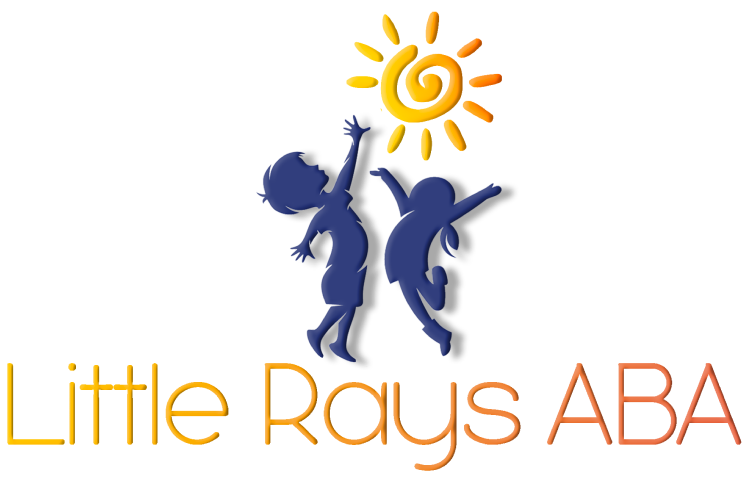History of Autism Spectrum Disorder
Autism spectrum disorder (ASD) is widely recognized today, but its history is relatively recent. Over time, our understanding of autism has evolved from misconceptions and misdiagnoses to a more scientific and compassionate approach. But when was autism discovered, and how has its definition changed over the years?
In this blog, we’ll explore the history of autism, from its earliest mentions to modern-day advancements in diagnosis and treatment.
Early Mentions of Autism-Like Behaviors
While autism as a medical diagnosis is relatively new, descriptions of autism-like behaviors date back centuries. Some historical figures are now speculated to have had autism based on their behaviors and writings.
18th & 19th Century Observations
Before autism was recognized as a distinct condition, individuals with autism-like traits were often misclassified under broader terms like "intellectual disability" or "schizophrenia." However, early physicians and educators did take note of behaviors that resemble what we now understand as autism.
- Jean-Marc Gaspard Itard (1801): A French physician who documented the case of "Victor, the Wild Boy of Aveyron," a child found living in the wilderness who displayed social withdrawal and communication difficulties. Some experts now speculate that Victor may have been autistic.
- John Haslam (1809): A British physician who described individuals with unusual social and communication challenges, though he did not use the term autism.
These early observations laid the groundwork for later research into developmental disorders.
The Discovery of Autism as a Medical Condition
The word "autism" was first introduced in the early 20th century, but it was not immediately recognized as a separate condition.
Eugen Bleuler and the First Use of “Autism” (1911)
The term “autism” was first used in 1911 by Swiss psychiatrist Eugen Bleuler. However, he used it to describe a symptom of schizophrenia, not as a separate condition. Bleuler derived the word from the Greek “autos,” meaning “self,” to describe individuals who withdrew into their own inner world.
At this time, autism was still considered a type of schizophrenia rather than a unique developmental disorder.
Leo Kanner and the First Diagnosis of Autism (1943)
Autism as an independent condition was first described by Dr. Leo Kanner, an Austrian-American psychiatrist, in 1943.
Kanner studied 11 children who exhibited:
- Extreme social withdrawal
- Delayed or unusual speech patterns
- Repetitive behaviors
- Strong attachments to routines and objects
He published his findings in a paper titled “Autistic Disturbances of Affective Contact.” Kanner called this condition “early infantile autism.”
Hans Asperger and High-Functioning Autism (1944)
Around the same time, Austrian pediatrician Hans Asperger was studying a different group of children with autism-like traits. In 1944, he published a paper describing children who had:
- Social difficulties but strong verbal skills
- Obsessive interests
- Clumsiness and motor coordination challenges
This became known as Asperger’s Syndrome, which was later classified under the autism spectrum.
Interestingly, Kanner and Asperger were conducting their research separately and were unaware of each other’s work. Asperger’s research remained relatively unknown until the 1980s, when it gained recognition in the English-speaking world.
The Evolution of Autism Diagnosis
As research progressed, the medical community slowly began to differentiate autism from schizophrenia and other mental health conditions.
1950s-1960s: The “Refrigerator Mother” Theory
During the 1950s and 1960s, autism was poorly understood, leading to harmful misconceptions. One widely accepted but incorrect theory was the "Refrigerator Mother" hypothesis, proposed by psychologist Bruno Bettelheim.
- This theory falsely claimed that autism was caused by emotionally cold and unloving mothers.
- Parents, especially mothers, were unfairly blamed for their child’s condition.
- This misconception caused significant distress for families and delayed proper treatment.
Fortunately, by the 1970s, scientific research debunked this theory, proving that autism is a neurological condition, not the result of poor parenting.
1980: Autism Added to the DSM-III
The Diagnostic and Statistical Manual of Mental Disorders (DSM-III), published in 1980, officially recognized autism as a separate disorder from schizophrenia.
- Autism was defined as a developmental disorder rather than a mental illness.
- The diagnosis focused on communication difficulties, social impairments, and repetitive behaviors.
This recognition was a major step in improving autism research, awareness, and support.
1990s: Expanding the Autism Spectrum
During the 1990s, researchers realized that autism varied significantly in its severity and presentation. This led to:
- The introduction of Asperger’s Syndrome as a distinct diagnosis.
- The recognition of high-functioning and low-functioning autism.
- The shift from viewing autism as a rare disorder to understanding it as a spectrum condition.
Modern Understanding of Autism
Today, autism is recognized as Autism Spectrum Disorder (ASD) and is understood to be a complex condition with varying levels of support needs.
2013: DSM-5 Redefines Autism Spectrum Disorder
In 2013, the DSM-5 updated its criteria and merged several diagnoses under the umbrella of Autism Spectrum Disorder (ASD), including:
- Classic autism
- Asperger’s Syndrome
- Pervasive Developmental Disorder-Not Otherwise Specified (PDD-NOS)
This change was made to provide a more accurate and flexible diagnosis, acknowledging that autism presents differently in each individual.
Autism Awareness and Advocacy
Thanks to decades of research and advocacy, autism awareness has increased significantly. Today, there is a greater emphasis on:
- Early diagnosis and intervention
- Acceptance and inclusion
- Personalized therapies, such as Applied Behavior Analysis (ABA)
Supporting Individuals with Autism
As our understanding of autism continues to grow, so do the resources and support systems available for individuals on the spectrum. One of the most effective therapies for autism is Applied Behavior Analysis (ABA), which helps develop communication, social, and life skills.
At Little Rays ABA, we are dedicated to helping children with autism reach their full potential through personalized therapy plans. If you’d like to learn more about how we can support your child, contact us today!
Frequently Asked Questions
Who first discovered autism?
Autism was first described as a distinct condition by Leo Kanner in 1943, though Swiss psychiatrist Eugen Bleuler used the term “autism” in 1911 to describe a symptom of schizophrenia.
When did autism become an official diagnosis?
Autism became an official diagnosis in 1980 when it was included in the DSM-III as a separate developmental disorder.
How has autism diagnosis changed over time?
The definition of autism has evolved from being considered a type of schizophrenia to a separate developmental disorder. In 2013, the DSM-5 reclassified autism under Autism Spectrum Disorder (ASD) to reflect its broad range of characteristics.
Sources:
- https://www.nimh.nih.gov/health/topics/schizophrenia
- https://psycnet.apa.org/record/1943-03624-001
- https://www.autismspeaks.org/asperger-syndrome
- https://embryo.asu.edu/pages/early-infantile-autism-and-refrigerator-mother-theory-1943-1970
- https://pubmed.ncbi.nlm.nih.gov/3787052/
- https://www.psychiatry.org/psychiatrists/practice/dsm
Unlock Your Child's Potential with Expert ABA Therapy!
At Little Rays ABA, we provide compassionate, evidence-based ABA therapy to help children with autism thrive. Our personalized approach fosters growth in communication, social skills, and independence.
Get In Touch With Us Today to Get Started With ABA Therapy!
Related Posts
MENU
GET IN TOUCH
7117 San Salvador Dr Boca Raton, FL 33433
3200 Collins Ave Miami Beach, FL 33140



